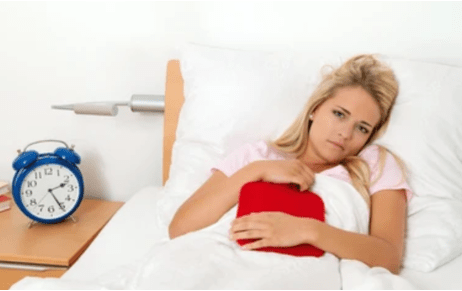INTRODUCTION When a woman experiences her period or menstruates, the menstrual cycle begins. A woman's…
Jurisdiction of Courts Under Section 62 of the Copyright Act and Section 134 of the Trademarks Act
The Hon’ble Supreme Court of India in “INDIAN PERFORMING RIGHTS SOCIETY LTD. Versus. SANJAY DALIA AND ORS”: (2015) 10 SCC 161 and the Hon’ble Division Bench of Delhi High court in ULTRA HOMES CONSTRUCTION PVT. LTD Versus PURUSHOTTAM KUMAR CHAUBEY & ORS FAO (OS) 494/2015 & CM 17816/2015 has interpreted Section 62 of the Copyright right, 1957 and Section 134of the Trademark Act, 1999 read with Section 20 of the CPC with respect to the Jurisdiction of the Court.
Both the above judgment gives an absolute relief to persons who have been accounted to great hardship of Jurisdiction by various multi-national Companies who normally used to file suit at a place where they used to have a sub-ordinate office and not at their principal office. The Defendants had no other option, but to submit to the said jurisdiction of these courts.
The Sanjay Dalia (supra) clearly provides that a suit under Section 62 of Copyright Act, 1957 or under Section 134 of the Trademarks Act, 1999 can be filed only at a place where the Plaintiff is either has a principle place of office and not the sub-ordinate office and further The Hon’ble Division bench in Ultra Homes (Supra) relying on the Sanjay Dalia (supra) contemplates 4 situations based on which the Plaintiff can institute suit.
The Hon’ble Apex court in Sanjay Dalia (supra) has held that the provisions of section 62 of the Copyright Act and section 134 of the Trade Marks Act never intended to operate in the field where the plaintiff is having its principal place of business at a particular place and the cause of action has also arisen at that place so as to enable it to file a suit at a distant place where its subordinate office is situated though at such place no cause of action has arisen. Such interpretation would cause great harm and would be juxtaposed to the very legislative intendment of the provisions so enacted.
The Hon’ble Apex court in Sanjay Dalia (supra) has further held that “In our opinion, in a case where cause of action has arisen at a place where the plaintiff is residing or where there are more than one such persons, any of them actually or voluntarily resides or carries on business or personally works for gain would oust the jurisdiction of other place where the cause of action has not arisen though at such a place, by virtue of having subordinate office, the plaintiff instituting a suit or other proceedings might be carrying on business or personally works for gain.
The Hon’ble Division Bench of Delhi High Court in Ultra Homes (Supra) relying on the Judgement of Sanjay Dalia (supra) has held that this deeming provision contained in the explanation in section 20 of the Code has been read into section 134(2) of the Trade Marks Act, 1999 and section 62(2) of the Copyright Act, 1957 for the purposes of isolating the place where the plaintiff can be said to carry on business. It will be noted that though the expression “carries on business” is used in all the three provisions (i.e., section 20 of the Code, section 134(2) of the Trade marks Act, 1999 and section 62(2) of the Copyright Act, 1957), the deeming provision contained in the Explanation in section 20 of the Code has not been expressly incorporated in the other two provisions. But, the Supreme Court has, in the said decision, given the expression “carries on business” used in relation to a corporation in the context of a defendant in section 20 of the Code the same meaning when it is used in relation to a plaintiff under the said sections 134(2) and 62(2).
The Hon’ble Division Bench has further contemplated 4 situations in the context of the plaintiff being a corporation (which includes a company).
First of all, is the case where the plaintiff has a sole office. In such a case, even if the cause of action has arisen at a different place, the plaintiff can institute a suit at the place of the sole office.
Next is the case where the plaintiff has a principal office at one place and a subordinate or branch office at another place and the cause of action has arisen at the place of the principal office. In such a case, the plaintiff may sue at the place of the principal office but cannot sue at the place of the subordinate office.
The third case is where the plaintiff has a principal office at one place and the cause of action has arisen at the place where its subordinate office is located. In this eventuality, the plaintiff would be deemed to carry on business at the place of his subordinate office and not at the place of the principal office. Thus, the plaintiff could sue at the place of the subordinate office and cannot sue (under the scheme of the provisions of section 134(2) and 62(2)) at the place of the principal office.
The fourth case is where the cause of action neither arises at the place of the principal office nor at the place of the subordinate office but at some other place. In this case, the plaintiff would be deemed to carry on business at the place of its principal office and not at the place of the subordinate office. And, consequently, it could institute a suit at the place of its principal office but not at the place of its subordinate office
CONCLUSION
The above two Judgment is a clear direction to Litigants including their attorneys for instituting a case in terms of Section 62 of the Copyright Act and Section 134 of the Trademarks act. The judgments clarifies that the suit can only be filed at a place where the plaintiff is having its principal place of business at a particular place and not at a distant place where its subordinate office is situated though at such place no cause of action has arisen. The Contemplation of 4 situations by the Hon’ble High Court has lead to ease the issue of Jurisdiction over matter related to Copyright and Trademarks. It can be of great help to either the Plaintiff who wish to file a case against the Defendants having offices at several location and the Defendants as well who can address the issue of contrary jurisdiction as provided in the said judgement.
About the Author: Mr. Amarjeet Kumar, Senior Associate (Litigation), Khurana & Khurana, Advocates and IP Attorneys and can be reached at:[email protected].



